The Well-Tempered Ear
The eighth annual UW Schubertiade is this Sunday afternoon. It features a FREE online retrospective of the past seven years plus a new four-hand piano performance
Leave a Comment
PLEASE HELP THE EAR. IF YOU LIKE A CERTAIN BLOG POST, SPREAD THE WORD. FORWARD A LINK TO IT OR, SHARE IT or TAG IT (not just “Like” it) ON FACEBOOK. Performers can use the extra exposure to draw potential audience members to an event. And you might even attract new readers and subscribers to the blog.
By Jacob Stockinger
The University of Wisconsin has posted the following announcement:
For the eighth consecutive year, the University of Wisconsin-Madison’s Mead Witter School of Music will present its annual Schubertiade — a special concert celebrating the music of Franz Schubert (below).
Traditionally these concerts have been held around the composer’s birthday. This year’s concert will in fact occur on his birthday — this Sunday, Jan. 31, at 3-4:30 p.m. CST. The pre-recorded premiere is at: https://youtu.be/7sshhKiFPAg
You can also use the link to prepare for the concert before or during the concert. You will find the program with song titles, the original German texts and English translation, and biographies of the performers by simply clicking on “SHOW MORE” on the YouTube website and follow the links to PDFs.
BECAUSE THERE ARE NO COPYRIGHT ISSUES, ACCORDING TO UW OFFICIALS, THE POST SHOULD BE UP AND AVAILABLE INDEFINITELY AFTER ITS PREMIERE.
As in past years, founders and performers Martha Fischer (below left), professor of piano and head of the collaborative piano program at UW-Madison, and her husband Bill Lutes (below right), an independent piano teacher, and UW emeritus artist-in-residence, will host the program.
These concerts have been presented in the sprit of the first Schubertiades (below, in a painting by Julius Schmid) that took place during the composer’s lifetime (1797-1828) in the homes of his friends and fellow artists, poets and fans.
These were social as well as musical occasions with Schubert himself presiding at the piano, giving his audience a chance to hear his latest songs, piano duets and chamber music, as well as pieces that had already become favorites.
This year’s Schubertiade will be different in response to the restrictions imposed by the Covid-19 pandemic. It will be an online look back — or Rückblick — at past concerts, with songs chosen from performances that have been preserved in the audio and video archive.
The featured performers will include faculty members, students and alumni from the Mead Witter School of Music, along with special guests.
In addition, pianists Fischer and Lutes will give a “new” performance recorded for this occasion of the great Fantasie in F minor for piano duet. (In the YouTube video at the bottom, you can hear that work, performed by Dutch brothers Lucas and Arthur Jussen and recorded live in Seoul, South Korea.)
The songs have been chosen to reflect themes that were not only relevant to Schubert and his circle, but also to all of us in the midst of this challenging time: hope for a brighter future; the need for connection with others; remembrance of happier times; and the consolation to be found in nature.
Schubert left a vast and precious legacy of beauty — an enormous output of music that he composed in his short lifetime.
In a sense, each time his music is performed and heard, it is a journey from the past to our own time, the sounds speaking to us today as vividly and consolingly as they did when they were created 200 years ago.
Performers
Martha Fischer and Bill Lutes, pianists
Alumni:
Jamie-Rose Guarrine, soprano (below, in a photo by Peter Konerko)
Emily Birsan, soprano
Michael Roemer, baritone
Jennifer D’Agostino, soprano
Daniel O’Dea, tenor
Wesley Dunnagan, tenor
Sarah Brailey (alumna and current DMA student)
Sara Guttenberg
Guests:
Marie McManama, soprano
Cheryl Bensman-Rowe, mezzo-soprano
Faculty:
Mimmi Fulmer, soprano
Paul Rowe, baritone (below)
Julia Rottmayer, soprano
Staff
David Alcorn, videographer, editor, etc.
Katrin Talbot, images for audio only tracks
Tags: #ArcticCircle, #ArthurJussen, #ArtSong, #AustrianComposer, #BassBaritone, #BillLutes, #BlogPost, #BlogPosting, #CentralTime, #ChamberMusic, #CherylBensman-Rowe, #CollaborativePianist, #CollaborativePIano, #CoronavirusPandemic, #COVID-19, #DanielO'Dea, #DavidAlcorn, #EmilyBirsan, #EnglishTranslation, #FacebookPost, #FacebookPosting, #FranzSchubert, #GuestArtist, #husband-and-wife, #JacobStockinger, #Jamie-RoseGuarrine, #JenniferD'Agostino, #JuliaRottmayer, #JussenBrothers, #KatrinTalbot, #LiveMusic, #LiveRecording, #LookBack, #LucasJussen, #MarthaFischer, #MeadWitterSchoolofMusic, #Mezzo-sopranoSinger, #MichaelRoemer, #MimmiFulmer, #MusicProfessor, #OnlineConcert, #PaulRowe, #SaraGuttenberg, #SarahBrailey, #SeoulSouthKorea, #SopranoSinger, #SouthEastAsia, #SouthKorea, #SpecialGuest, #Sundayafternoon, #TenorSinger, #TheEar, #TheNetherlands, #TheUW, #UniversityofWisconsin-Madison, #UWSchubertiade, #VirtualConcert, #VocalMusic, #WesleyDunnagan, #Wife-and-Husband, #YouTubeChannel, #YouTubevideo, alumni, announcement, archive, art song, Arthur Jussen, artist, artist-in-residence, Arts, Asia, asian, audience, Audio, Austria, bass, bass-baritone, before, Bill Lutes, bio, biography, birthday, blog, brighter, celebrate, Central Time, challenging, Chamber music, Cheryl Bensman Rowe, chosen, circle, Classical music, collaborative, composer, Concert, connections, consolation, copyright, coronavirus, Daniel O'Dea, David Alcorn, different, duet, Dutch, editor, emeritus, Emily Birsan, English, Europe, European, Facebook, Facebook post, Facebook posting, fans, Fantasie, fantasy, favorite, forward, found, founder, Franz Schubert, friends, future, German, Germany, good-natured, great, guest artists, happier, Home, hope, host, images, indefinitely, independent, issue, Jacob Stockinger, Jamie-Rose Guarrine, Jennifer D'Agostino, Julia Rottmayer, Jussen, Jussen brothers, Katrin Talbot, Korea, lieder, lifetime, like, link, live music, Live Recording, look back, Lucas Jussen, Madison, Martha Fischer, Mead Witter School of Music, Mezzo-soprano, Michael Roemer, Mimmi Fulmer, Music, music professor, nature, occasion, occur, online, original, other, painting, pandemic, past, Paul Rowe, performance, performer, photographer, photographs, Pianist, Piano, piano duets, pieces, poets, post, postih, pre-recorded, premiere, prepare, present, preserved, professor, program, reflect, remembrance, response, restrictions, retrospective, Sara Guttenberg, Sarah Brailey, Schubert, Schubertiade, Seoul, share, sing, singers, Singing, social, song, songs, soprano, South Korea, Southeast Asia, special, special guest, spirit, students, Sunday afternoon, tag, Teacher, tenor, text, The Ear, the Netherlands, theme, time, trabslatio, tradition, United States, University of Wisconsin-Madison School of Music, University of Wisconsin–Madison, UW, UW-Madison, video, Vienna, virtual, vocal music, Website, Wesley Dunnagan, Wisconsin, year, YouTube
Classical music: The Middleton Community Orchestra and solo trumpeter Jessica Jensen score big with an unusual program
1 Comment
IF YOU LIKE A CERTAIN BLOG POST, PLEASE SPREAD THE WORD. FORWARD A LINK TO IT OR, SHARE or TAG IT (not just “Like” it) ON FACEBOOK. Performers can use the extra exposure to draw potential audience members to an event.
By Jacob Stockinger
Here is a special posting, a review written by frequent guest critic and writer for this blog, John W. Barker. Barker (below) is an emeritus professor of Medieval history at the University of Wisconsin-Madison. He also is a well-known classical music critic who writes for Isthmus and the American Record Guide, and who hosts an early music show once a month on Sunday morning on WORT FM 89.9 FM. For years, he served on the Board of Advisors for the Madison Early Music Festival and frequently gives pre-concert lectures in Madison. He also took the performance photos.
By John W. Barker
The concert by the largely amateur Middleton Community Orchestra (below, in a photo by Margaret Barker) on Wednesday night presented a novel program at the Middleton Performing Arts Center.
In the relatively brief first part, it presented two unusual items.
The first was by Nebojsa “Neb” Macura (b. 1982, below right with conductor Steve Kurr), a local musician of Serbian background, who has been particularly identified with Russian folk music and ensembles. But he also plays viola in the MCO, which gave him this opportunity in the spotlight.
His piece, Polar Night, is quite brief, but in this version for full orchestra (with piano), it is grounded with secure melodic flow, and it unfolds into a tonal picture full of beautiful colors. My only reservation was that I wanted more of it — either more music in this piece or other sections around it.
Macura is obviously talented, and he has a confident sense of orchestral writing. I really look forward to hearing more of him. Indeed, the MCO might well serve as exactly the laboratory in which he can develop new creations.
The second item was only a bit longer, a Trumpet Concerto by Russian composer Aleksandra Pakhmutova (b. 1929, below). Her long career has involved her in jazz, and also in extensive scoring for films. But she has a feeling for Russian traditional song, and that could be heard in this concerto.
It is cast in only a single movement, but it proceeds episodically. There is certainly much flashy writing for the solo instrument, and local trumpeter Jessica Jensen (below) brought off her role dashingly.
The longer second part of the concert was devoted to the Symphony No. 3, the “Rhenish,” by Robert Schumann. This splendid work was inspired by observation of life along the Rhine River.
It is unusual in being written in five movements, not the conventional four. (Oddly, their individual markings were not printed in the program, but conductor Steve Kurr (below) gave a clever spoken introduction that outlined the score for the audience.)
This is a very extroverted work, calling for a lot of orchestral sonority. I suspect that a little more rehearsal time would have helped the avoidance of some blemishes: rapid passages, especially in the first movement, were roughly articulated, and there were some tiny gaffes all along.
But the players were devoted in responding to maestro Kurr’s rather propulsive tempos. This score gives a lot to do particularly to the horn section, which played with ardent splendor.
As always, then, the MCO earned further laurels for presenting this very adventurous program.
Tags: #AleksandraPakhmutova, #AmericanRecordGuide, #Beautifulmusic, #BlogPost, #BlogPosting, #BrassSection, #EmeritusProfessor, #FacebookPost, #FacebookPosting, #FolkMusic, #HornSection, #IsthmusNewspaper, #JazzMusic, #JessicaJensen, #JohnW.Barker, #MadisonEarlyMusicFestival, #MedievalHistory, #MelodicMusic, #MiddletonCommunityOrchestra, #MiddletonPerformingArtsCenter, #NebMacura, #NebojsaMacura, #OrchestralMusic, #RehearsalTime, #RhenishSymphony, #RhineRiver, #RobertSchumann, #RussianComposer, #RussianCulture, #SteveKurr, #SundayMorning, #TheScore, #TrumpetConcerto, #UniversityofWisconsin-Madison, #ViolaMusic, #WORT-FM89.9, adventurous, Aleksandra Pakhmutova, American Record Guide, Arts, audience, background, beautiful, blog, brass, brief, Classical music, color, composer, concerto, conductor, confident, craeer, Creation, critic, devoted, Early music, earlymusic, emeritus, episode, Facebook, feeling, film, flashy, flow, Folk music, forward, guest, Horn, host, instrument, introduction, Isthmus, Jacob Stockinger, Jazz, Jessica Jensen, John W. Barker, Laboratory, laurels, lecture, life, like, link, local, Madison, Madison Early Music Festival, melody, Middleton Community Orchestra, Middleton Performing Arts Center, more, movement, movie, Music, Musician, Neb Macura, Nebojsa Macura, observation, opportunity, Orchestra, performer, photo, Piano, players, post, posting, professor, program, rehearsal, relative, reservation, responding, Rhenish Symphony, Rhine River, Robert Schumann, Russian, Russian culture, score, scoring, section, secure, Serbia, Serbian, share, single, solo, soloist, song, sonority, splendid, spoken, spotlight, Steve Kurr, Sunday, symphony, tag, talented, tempos, traditional, Trumpet, trumpet concerto, trumpeter, United States, University of Wisconsin-Madison School of Music, University of Wisconsin–Madison, Viola, Violin, Wisconsin, WORT-FM 89.9, Writer, YouTube
Classical music: The talented new director of the Isthmus Vocal Ensemble sets the acclaimed and still impressive group on a new path with mixed results and hopeful expectations
6 Comments
By Jacob Stockinger
Here is a special posting, a review written by frequent guest critic and writer for this blog, John W. Barker. Barker (below) is an emeritus professor of Medieval history at the University of Wisconsin-Madison. He also is a well-known classical music critic who writes for Isthmus and the American Record Guide, and who hosts an early music show once a month on Sunday morning on WORT-FM 89.9 FM. For years, he served on the Board of Advisors for the Madison Early Music Festival and frequently gives pre-concert lectures in Madison. He also took the performance photos.
By John W. Barker
The Isthmus Vocal Ensemble (IVE, below) is a well-established part of Madison’s musical summers. It offers dedicated choral singers a chance for intensive rehearsal preparation of highly accomplished choral music, and has delivered some truly memorable events over the years.
Of its concerts this year, I caught the second performance on Sunday afternoon. The choir itself doesn’t need to be shown off by now, but it was the choir’s chance to show off its new conductor in his first appearance here.
Michael McGaghie (below) is that new conductor. He is very plainly a brilliant choral technician who knows how to make a choir sound wonderful. (For more about McGaghie, who is the Director of Choral Activities at Macalester Collge in St. Paul and who leads the Harvard Glee Club Alumni Chorus in Cambridge, Mass., go to: https://www.isthmusvocalensemble.org/artisticdirector/)
That he did throughout the program. The IVE — 69 singers strong — certainly responded with an infectious enthusiasm that was also communicated to the large audience that filled the Christ Presbyterian Church. The concert was certainly a feast of great choral singing.
But what about the music?
To begin with, the actual music amounted to no more than about an hour’s worth. McGaghie planned the program as a progress of emotional moods, and he introduced each piece himself.
But what were the contents? McGaghie largely turned his back on the centuries of great choral music, the kind that his predecessor Scott MacPherson explored so ambitiously.
There were, at the beginning, two examples of that, motets by Thomas Tallis of the 16th century and Heinrich Schütz of the 17th century.
There was also an interesting nugget from the Russian composer and conductor Nikolai Golovanov (below), an early work of his (1917), setting the Lord’s Prayer (Otche naš) In a style departing from the previous two centuries of great Russian Orthodox choral writing.
Beyond those, however, the remaining nine items in the program — and the encore — were entirely by recent composers, mostly living and mostly American. These were his introductory calling cards, and so they invite scrutiny.
Ours is not an age of great, idiomatic choral writing, and composers go their own ways variously. Many of them rely upon a kind of chordal declamation with little sense of line or full-bodied texture.
Some pieces I don’t think I would want to hear again, and a couple I would not have wanted to hear even the first time.
An example of the latter is a piece about sirens and sailors by Chinese-American Chen Yi (below top), a collage of weird choral sounds but no musical content recognizable to any but Chinese ears.
Another was a loudly trashy adaptation of a Civil Rights “freedom song” by Jeffrey Douma (below bottom), plus the gesture to multicultural triviality in a Philippine folksong arrangement.
Three of the items came with piano accompaniment. In The Whole Sea in Motion by Dale Trumbore (below top) — which uses a text from Anne Brontë — the piano gave an underlying ripple to support declamatory, non-linear writing.
In Eternity by Donald Martino (below), the pleasantly lyrical choral writing really didn’t need the piano at all. And that part was much too prominent against Morten Lauridsen’s nicely polyphonic, and quite self-sufficient, choral texture in “Sure on This Shining Night” that treated James Agee’s famous poem. (You can hear the Lauridsen work in the YouTube video at the bottom.)
There were certainly some among these contemporary items that I found quite enjoyable.
In Ophelia, a setting the account of that woman’s death in Hamlet, Jocelyn Hagen (below top) was overly concerned with story-telling, but the work certainly contained some lovely writing. O Radiant Dawn by Scottish master James MacMillan (below bottom) was a beautifully sonorous tribute to Catholic liturgical tradition.
What does this conducting debut point to for the future?
McGaghie can create the most splendid choral beauty — though often at the sacrifice of clear diction. On the basis of this program, it looks like he could now focus the IVE on lots of short contemporary pieces, rather than on the vast traditional literature.
We will have to see.
Tags: #Americancomposers, #AmericanRecordGuide, #AnneBrontë, #BlogPost, #BlogPosting, #CambridgeMassachusetts, #ChenYi, #ChoralMusic, #ChristianChurch, #ChristianReligion, #ChristPresbyterianChurch, #CivilRights, #DaleTrumbore, #DonaldMartino, #EmeritusProfessor, #GleeClub, #HarvardUniversity, #HeinrichSchütz, #IsthmusNewspaper, #IsthmusVocalEnsemble, #JamesAgee, #JamesMacMillan, #JeffreyDouma, #JesusChrist, #JocelynHagen, #JohnW.Barker, #Lord'sPrayer, #MacalesterCollege, #MadisonEarlyMusicFestival, #MedievalHistory, #MichaelMcGaghie, #MortenLauridsen, #MusicCritic, #NikolaiGolovanov, #PianoAccompaniment, #PolyphonicMusic, #RomanCatholicism, #RussianComposer, #ScottMacPherson, #St.PaulMinnesota, #ThomasTallis, #UniversityofWisconsin, #UniversityofWisconsin-Madison, #WilliamShakespeare, #WORT-FM89.9, 16th century, 17th century, accompaniment, alumni, American Record Guide, Anne Brontë, arrangement, Arts, Baroque, beauty, brilliant, Chen Yi, Chinese, Chinese-American, Choir, choral, choral music, chordal, Christ, Christ Presbyterian Church, church, civil rights, Classical music, classicalmusic, collage, composer, Concert, conductor, Dale Trumbore, declamation, director, Donald Martino, Early music, earlymusic, emeritus, emotion, emotional, enthusiasm, event, famous, feast, folk song, folksong, gesture, Glee Club, Hamlet, Harvard, Heinrich Schütz, History, infectious, Isthmus, Isthmus Vocal Ensemble, Jacob Stockinger, James Agee, James MacMillan, Jesus, Jesus Christ, Jocelyn Hagen, John W. Barker, lecture, liturgical, Lord, Lord's Prayer, Madison, Madison Early Music Festival, Medieval, MEMF, memorable, Michael McGaghie, Morten Lauridsen, motet, multicultural, Music, Nikolai Golovanov, Ophelia, Philippine, photo, Piano, piece, plan, poem, Poetry, polyphonic, polyphony, prayer, Presbyterian, professor, program, recent, rehearsal, Roman Catholicism, Russian, Scotland, Scott MacPherson, Scottish, sea, Shakespeare, singer, Singing, St. Paul, summer, Thomas Tallis, tribute, triviality, United States, University of Wisconsin-Madison School of Music, University of Wisconsin–Madison, vocal music, Wisconsin, WORT-FM 89.9, YouTube
Classical music education: The all-student Madison Youth Symphony Orchestra scores another big success with music by Mozart, Copland and Grieg
1 Comment
By Jacob Stockinger
Here is a special posting, a review written by frequent guest critic and writer for this blog, John W. Barker. Barker (below) is an emeritus professor of Medieval history at the University of Wisconsin-Madison. He also is a well-known classical music critic who writes for Isthmus and the American Record Guide, and who hosts an early music show once a month on Sunday morning on WORT-FM 89.9 FM. For years, he served on the Board of Advisors for the Madison Early Music Festival and frequently gives pre-concert lectures in Madison. He also took the performance photos.
By John W. Barker
The Madison Area Youth Chamber Orchestra (below, in a photo by Steve Rankin), founded and led by Mikko Rankin Utevsky is celebrating its fourth season of summer training sessions and public concerts.
I had to miss the first one of this summer, back in June, but I caught up with their second one, on last Saturday night, given at the First United Methodist Church on Wisconsin Avenue.
The church is now pursuing an active program of concerts, and this was the first one I have attended there. The hall (below) is a beautiful and spacious one, with fine acoustics. The fifty-odd people who attended were all but dwarfed by its amplitude.
The first half of the program was devoted to Mozart’s Piano Concerto No. 9 in E-flat, K. 271, often known by the name “Jeunehomme” for the student who inspired it. It is a boldly innovative work, even as it is the composer’s first truly mature essay in this form.
The soloist was Trevor Stephenson (below top and left in bottom photo), artistic director of the Madison Bach Musicians, playing his own fortepiano.
That instrument lacks the big and forceful sound of the modern grand piano, and Stephenson rightly shunned heroics for greater delicacy. Even with an orchestra of only 16 players, the instrument defined a balance that was fascinatingly different from what we usually hear. (In the YouTube video at the bottom, you can hear the Mozart concerto played on a fortepiano by Malcolm Bilson, who was Trevor Stephenson’s teacher.)
After the intermission, Utevsky identified a policy now established by the organization, one that allows certain players in the orchestra to become podium “interns”, for training and for one performance opportunity.
This time cellist Elizabeth Strauss (below) was given a chance to conduct the familiar string arrangement that Edvard Grieg made of his song Våren (usually translated as “The Last Spring”).
Strauss seemed very confident. I did find her tempo a little faster than seems good to me, and a string group of only a dozen players could hardly achieve the polish and richness that most performances bring off. Still, the point is the wonderful experience given to such a trainee-conductor in these circumstances.
The concert concluded as Utevsky conducted the recast orchestra (below) in the suite for 13 instruments that Aaron Copland derived from his ballet Appalachian Spring.
This is a beautiful piece of Americana in music, and both conductor and players gave it their full devotion. The result was a handsomely well-balanced and nicely blended performance that obviously moved the audience greatly.
The MAYCO organization has made a real place for itself in Madison’s summer music, giving valuable experience to both the conductor and his student players, as they grow into mature orchestral musicians.
Long may it succeed!
Tags: #AaronCopland, #AmericanRecordGuide, #AppalachianSpring, #ArtisticDirector, #balletsuite, #BlogPosting, #ChristianChurch, #ChristianReligion, #Classicalera, #EdvardGrieg, #EmeritusProfessor, #FirstUnitedMethodistChurch, #IsthmusNewspaper, #JohannSebastianBach, #JohnW.Barker, #MadisonAreaYouthChamberOrchestra, #MadisonBachMusicians, #MadisonEarlyMusicFestival, #MalcolmBilson, #MedievalHistory, #MikkoUtevsky, #MusicCritic, #MusicEducation, #MusicReview, #OrchestralMusic, #PeriodInstruments, #PianoConcerto, #PublicConcert, #StringMusic, #SummerMusic, #SundayMorning, #TrevorStephenson, #UniversityofWisconsin, #UniversityofWisconsin-Madison, #WolfgangAmadeusMozart, #WORT-FM89.9, #YouTubevideo, Aaron Copland, acoustics, American Record Guide, Americana, Appalachian Spring, Artistic director, Arts, Bach, balance, ballet, big, blend, blog, bold, Cello, Chamber music, Christian, Christianity, church, Classical music, classicalmusic, composer, concerto, conductor, critic, Early music, earlymusic, Edvard Grieg, emeritus, essay, experience, forceful, form, fortepiano, founder, hall, History, innovative, instrument, intern, Isthmus, Jacob Stockinger, Jeunehomme, Johann Sebastian Bach, John W. Barker, lecture, Madison, Madison Area Youth Chamber Orchestra, Madison Bach Musicians, Madison Early Music Festival, Malcolm Bilson, mature, MAYCO, Medieval, MEMF, Methodist, Mozart, Music, Music education, Orchestra, organization, period instruments, Piano, Piano concerto, policy, Polish, post, posting, professor, program, public, review, richness, soloist, song, Sound, string music, strings, Student, Suite, summer, symphony, Teacher, Tempo, training, Trevor Stephenson, United States, University of Wisconsin-Madison School of Music, University of Wisconsin–Madison, Viola, Violin, Wisconsin, Wolfgang Amadeus Mozart, WORT-FM 89.9, YouTube
Classical music: The Willy Street Chamber Players conclude this summer season on such a high note that one already hungers for next summer
Leave a Comment
By Jacob Stockinger
Here is a special posting, a review written by frequent guest critic and writer for this blog, John W. Barker. Barker (below) is an emeritus professor of Medieval history at the University of Wisconsin-Madison. He also is a well-known classical music critic who writes for Isthmus and the American Record Guide, and who hosts an early music show once a month on Sunday morning on WORT-FM 89.9 FM. For years, he served on the Board of Advisors for the Madison Early Music Festival and frequently gives pre-concert lectures in Madison.
By John W. Barker
At Immanuel Lutheran Church last Friday night, the Willy Street Chamber Players ended the 2018 summer season – their fourth — with a concert full of fascinating variety.
Four works were performed, each introduced by one of the players. Personnel shifted according to the scorings.
To begin, a core group of the organization (below, from left) — violinists Eleanor Bartsch and Paran Amirinazari, cellists Lindsay Crabb and Mark Bridges, and violist Beth Larson — played Luigi Boccherini’s Cello Quintet in C major (G. 324), which has the Italian title translatable as “Night Music of the Streets of Madrid.” (The piece, which has military or martial aspects to it, was featured in the soundtrack to the popular film “Master and Commander,” which you can hear in the YouTube video at the bottom.)
Typical of the composer’s prolific writing for string quintets, it is unique in offering in its seven movements a dusk-to-dawn evocation of Madrid’s street life in Boccherini’s day. This delightful work was performed with relish.
Next came a contemporary work by American composer Andrew Norman (below top). Written in his 20s, Night Screens (2002),for flute and string quartet, is a playful work inspired by the asymmetrical stained glass windows designed by architect Frank Lloyd Wright.
The music is quite tonal, but very episodic in its succession of tempos and rhythms. For this work, Amirinazari, Larson and Crabb were joined by a friend of the composer, flutist Timothy Hagen (below), now a faculty member of the UW-Madison’s Mead Witter School of Music.
Rarely heard in concert, but a really fascinating novelty is Sergei Prokofiev’s Overture on Hebrew Themes, Op. 34. This was composed in 1919, during the composer’s stay in the U.S. It is based on two melodies whose actual Jewish origins are in doubt, but their juxtaposition and elaboration are fascinating to follow.
The colorful scoring is for clarinet, piano, and string quartet, so this drew other guest artists, Alicia Lee (below top) also of the UW faculty, and pianist Thomas Kasdorf (below bottom) to join Bartsch, Amirinazari, Larson and Bridges.
Finally came a rare opportunity to encounter Johann Strauss II collaborating with Arnold Schoenberg, or rather vice-versa. For a fund-raising concert on behalf of his radical atonal ensemble in Vienna in 1925, Schoenberg made a chamber arrangement of the great waltz master’s Kaiser-Walzer or “Emperor Waltz.”
He scored it for flute, clarinet, piano and string quartet — perfectly allowing seven of the eight performers (less Crabb) to offer a triumphant grand finale. Even in such a lean and reduced format, Schoenberg faithfully conveyed Strauss’s melodic genius, and brought the large audience enthusiastically to its feet.
The Willys continue to match great enterprise in programming with superb artistry in playing, all in a summer season that leaves us hungering for the next one.
Tags: #AliciaLee, #AmericanComposer, #AmericanRecordGuide, #AndrewNorman, #ArnoldSchoenberg, #AtonalMusic, #BethLarson, #BlogPosting, #CelloQuintet, #ChristianChurch, #ChristianReligion, #ContemporaryComposer, #ContemporaryMusic, #EleanorBartsch, #EmeritusProfessor, #FacultyMember, #FilmMusic, #FilmScore, #FilmSoundtrack, #FluteMusic, #FrankLloydWright, #Fridaynight, #GrandFinale, #ImmanuelLutheranChurch, #IsthmusNewspaper, #JohannStrauss, #JohnW.Barker, #LindsayCrabb, #LivingComposer, #LuigiBoccherini, #LutheranChurch, #LutheranReligion, #MadisonEarlyMusicFestival, #MadridSpain, #MarkBridges, #MartialMusic, #MasterandCommander, #MeadWitterSchoolofMusic, #MedievalHistory, #MilitaryMusic, #MovieMusic, #MovieScore, #MovieSoundtrack, #MusicReview, #NewMusic, #NightMusic, #OvertureonHebrewThemes, #ParanAmirinazari, #PianoMusic, #RadioHost, #RadioShow, #RussellCrowe, #SergeiProkofiev, #StainedGlass, #StreetLife, #StringQuartet, #StringQuintet, #SummerSeason, #TheWillys, #ThomasKasdorf, #TimothyHagen, #TonalMusic, #UnitedStates, #UniversityofWisconsin, #UniversityofWisconsin-Madison, #ViennaAustria, #WillyStreetChamberPlayers, #WORT-FM89.9, #YouTubevideo, American, American Record Guide, Andrew Norman, architect, artistry, asymmetrical, atonal, audience, Austria, Beth Larson, blog, Boccherini, cellist, Cello, clarinet, clarinetist, classicalmusic, Concert, critic, dawn, delightful, dusk, Early music, earlymusic, elaboration, Eleanor Bartsch, emeritus, Emperor, episode, episodic, faculty, fascinating, feet, film, flute, flutist, format, Frank Lloyd Wright, Friday, friend, genius, guest, Hebrew, History, Immanuel Lutheran Church, inspiration, inspired, Isthmus, Italian, Jewish, John W. Barker, juxtaposition, lecture, Lindsay Crabb, Luigi Boccherini, Madison Early Music Festival, Madrid, Mark Bridges, martial, Master and Commander, Medieval, melodic, melody, member, MEMF, military, movie, Music, Music of Spain, New Music, night, night music, novelty, origin, Overture, Paran Amirinazari, perform, Piano, playful, playing, popular, post, posting, professor, programming, Prokofiev, prolific, quintet, relish, review, rhythm, Russell Crowe, score, Sergei Prokofiev, soundtrack, Spain, stained glass, street, String quartet, summer, superb, Tempo, The Willys, theme, tonal, translate, triumphant, U.S., United States, variety, video, Vienna, Viola, Violin, violinist, violist, Waltz, Willy Street Chamber Players, window, work, WORT-FM 89.9, Writer
Classical music: How did a reformation in religion and a revolution in printing change music? The 19th annual Madison Early Music Festival (MEMF) offers answers and samples this week. Part 2 of 2
4 Comments
By Jacob Stockinger
Starting this Saturday and running through the following Saturday, the 19th annual Madison Early Music Festival will explore the profound effects that the Lutheran Reformation and the invention of printing had on Renaissance and Baroque music of the time.
The festival is called “A Cabinet of Curiosities: A Journey to Lübeck.” For a complete listing of programs, lectures, concerts and workshops, with information about tickets, go to: https://memf.wisc.edu
Soprano Cheryl Bensman Rowe — who directs the festival with UW Arts Institute’s Sarah Marty and her husband and UW-Madison baritone Paul Rowe — recently agreed to do a Q&A with The Ear about the upcoming festival. Here is Part 2 of 2. And, if you missed the beginning, here is a link to Part 1:
How does early north German music differ from its counterparts in, say, Italy, France, Germany and England. What is the historical origin and aesthetic importance of the music from that era in that part of the world?
One of the biggest changes during the Reformation in Germany began with sacred music and the far-reaching changes in the way it served the church. The music of mass, motet, psalm and hymn heard in the great urban cathedrals, cloistered chapels and royal palace churches of Catholicism represented the “otherness” of the divine, a God unreachable by the untutored masses.
Written in an intellectual language which required years of rigorous training to learn and understand, it was only the disciplined, practiced choir boys and men who could perform this sacred polyphony in all its wonder and glory.
Luther sought to traverse this divide. Though he held the existing music of sacred polyphony in high esteem, he felt that music could be used to even greater effect in furthering the education and religious commitment of the people.
Luther (below) chose the hymn form as the principle means to his musical aims. A prolific hymnodist himself, he authored hymns such as the famous “Ein feste Burg ist unser Gott” (“A Mighty Fortress Is Our God“) several settings of which begin the All-Festival concert, attempted to connect existing high art with folk music in a style that would appeal to all classes, clergy and laity, men, women and children. His texts were in the German vernacular in order to convey messages that would be understood by all in a way that the Latin of preexisting hymns were not.
The culmination of those first 100 years of reformed musical development and the composers whose works will be performed throughout the week at MEMF, launched the reformed hymnody of Luther (below) and his followers into the stratosphere of such giants as Heinrich Schütz, Dietrich Buxtehude, Johann Sebastian Bach (all the Bachs for that matter) and on, a trail that continues to the present day.
What music and composers of that era have been most neglected and least neglected by historians and performers? Does rediscovery of works and composers play a special role this year?
Throughout the week we will be featuring compositions from the Choir Library from the Marienkirche in Lübeck (below) is a collection of music that Lübeck scholar and Buxtehude biographer Kerala Snyder catalogued and reconstructed.
The collection ended up in Vienna in the 19th century, and is a comprehensive data base that includes compositions by German and Italian composers, including Heinrich Schütz, Hermann Schein, Palestrina – the list starts with Agazzari and ends with Zucchini.
Besides the Choir Library compositions, audiences will have an opportunity to hear works of Buxtehude that have never been performed in Madison.
Can you tell us about the program and performers for the All-Festival concert on Saturday, July 14?
The All-Festival Concert (below) includes all of our workshop participants and faculty. We work together to prepare the concert all week and it is truly a MEMF community project. The music will be drawn from settings and compositions based on Lutheran chorales such as Ein Feste Burg and from the Choir Library of the Marienkirche.
The concert concludes with Buxtehude’s Missa Brevis and concludes with his grand motet, Benedicam Dominum in omne tempore, written for six contrasting choirs, which Buxtehude surely composed to match the structural design of the Marienkirche. (You can hear the Kyrie from Buxtehude’s “Missa Brevis” in the YouTube video at the bottom.)
Are there other sessions — guest lectures, certain performers, particular works — that you especially recommend for the general public?
All the planning that goes into each festival leads me to encourage the general public to attend everything. The concert series, lectures and workshop have so much to offer.
Special events include a dance with a live band drawn from the MEMF Faculty with dance instruction by Peggy Murray, Tanzen und Springen,at Memorial Union in the Grand Hall on Thursday night.
The lecture series features some well-known Madison scholars — John W. Barker and J. Michael Allsen, plus Michael Alan Anderson (below top), director of Schola Antiqua and professor of musicology, and Jost Hermand (below bottom), Professor Emeritus at the UW-Madison.
There will be a special exhibit created for MEMF in the lobby of Memorial Library by Jeanette Casey, the Head of the Mills Music Library and Lisa Wettleson of Special Collections at Memorial Library.
This curated display reflects the celebration of the 500th anniversary of the Reformation. The exhibit will be in the lobby of Memorial Library and open to the public through Thursday, July 19, 2018, with a special talk about the exhibit during the festival on Monday, July 9, at 11:30 a.m. This wonderful partnership allows the library to display rarely seen original and facsimile publications, some dating back to the 15th and 16th centuries within the context of the MEMF theme.
Is there anything else you would like to add?
Martin Luther, who was a great lover of music, said: “The riches of music are so excellent and so precious that words fail me whenever I attempt to discuss and describe them…. In summa, next to the Word of God, the noble art of music is the greatest treasure in the world. It controls our thoughts, minds, hearts, and spirits…”
Join us to hear what Luther was talking about! Get your tickets for the concert series! Attend the lectures! Take some classes! You’ll find a link for all the information about MEMF at www.madisonearlymusic.org
Tags: #AMightyFortressIsOurGod, #ArtsInstitute, #BaroqueMusic, #BritishMusic, #CabinetofCuriosities, #CatholicReligion, #ChoirBoy, #ChristianChurch, #ChristianMusic, #ChristianReligion, #DataBase, #DietrichBuxtehude, #EinFesteBurg, #EmeritusProfessor, #FrenchMusic, #GeorgeFridericHandel, #GeorgPhilippTelemann, #GermanComposers, #GermanMusic, #GiovannidePalestrina, #GrandHall, #HeinrichSchütz, #HermannSchein, #ItalianComposers, #ItalianMusic, #J.MIchaelAllsen, #JesusChrist, #JohannSebastianBach, #JohnW.Barker, #JostHermand, #KeralaSnyder, #LatinLanguage, #LübeckGermany, #LutheranReformation, #MadisonEarlyMusicFestival, #MadisonWisconsin, #MartinLuther, #MemorialLibrary, #MichaelAlanAnderson, #MillsMusicLibrary, #MissaBrevis, #MusicFestival, #PeggyMurray, #ProtestantReformation, #ProtestantReligion, #RareBooks, #RenaissanceMusic, #RomanCatholic, #RomanCatholicism, #RomanCatholicReligion, #SacredMusic, #ScholaAntiqua, #SecularMusic, #SpecialCollection, #UniversityofWisconsin, #UniversityofWisconsin-Madison, #ViennaAustria, #WesternCulture, #WesternMusic, #WesternReligion, #WordofGod, #YouTubevideo, aesthetic, Agazzari, anniversary, Arts, Bach, baritone, Baroque, base, beginning, biographer, biography, Book, books, cabinet, cathedral, Cello, Chamber music, chapel, children, Choir, choral music, church, class, classes, Classical music, composer, Composition, Concert, dance, data, data base, divien, Early music, earlymusic, Education, emeritus, England, era, esthetic, exhibit, festival, France, George Frideric Handel, German, Germany, God, Heinrich Schütz, historian, historical, History, hymn, invention, Italy, Jacob Stockinger, Johann Sebastian Bach, John W. Barker, Jost Hermand, journey, Kerala Snyder, Kyrie, laity, Latin, lecture, library, lover, Lubeck, Madison, Marienkirche, mass, masses, Memorial Library, men, Mills Music Library, motet, Music, musicology, palace, Palestrina, part, Peggy Murray, People, performer, polyphony, premiere, printing, professor, program, psalm, Religion, royal, Schien, Schola Antiqua, scholar, Sonata, soprano, St. Mary, time, United States, University of Wisconsin-Madison School of Music, University of Wisconsin–Madison, urban, vernacular, video, Vienna, Viola, Violin, vocal music, Wisconsin, women, word, work, works, workshop, YouTube, Zucchini
Classical music: Superb music-making offset awkward acting and dancing in a concert that the Bach Dancing and Dynamite Society gave last weekend. This summer’s last BDDS concerts are tonight, Saturday and Sunday
13 Comments
By Jacob Stockinger
Here is a special posting, published belatedly but in time for this weekend’s upcoming closing concerts – two performances each of two programs — of the current summer season by the Bach Dancing and Dynamite Society.
It is a review written by frequent guest critic and writer for this blog, John W. Barker. Barker (below) is an emeritus professor of Medieval history at the University of Wisconsin-Madison. He also is a well-known classical music critic who writes for Isthmus and the American Record Guide, and who hosts an early music show once a month on Sunday morning on WORT FM 89.9 FM. For years, he served on the Board of Advisors for the Madison Early Music Festival and frequently gives pre-concert lectures in Madison.
Performance photos were taken by Dick Ainsworth for BDDS.
By John W. Barker
One of the two programs of the Bach Dancing and Dynamite Society’s second weekend this season was held in the Overture Center’s Playhouse last Saturday night.
The associations of its three works with war were somewhat strained, most of all for Robert Schumann’s Three Romances, Op. 94. They were composed in 1849 for the options of oboe and violin or clarinet with piano.
On this occasion they were presented in a transcription for bassoon, made by the performer, Adrian Morejon (below). He played these brief and lovely pieces beautifully, but I confess I would have liked them more if one of the stipulated, higher-range instruments had been used.
The first major work was from the contemporary American composer Kevin Puts (below), called Einstein on Mercer Street. It is a kind of cantata, a half-hour in length, cast in five sections, each beginning with spoken words but moving to singing.
The text, whose origins were not made clear, purports to represent the thinking of Albert Einstein in his last years in Princeton, N.J., as he contemplates his place in science and in the creation of the atomic bomb.
The vocal part was written for baritone Timothy Jones (below center), who performed it this time, delivering it with confident eloquence. To tell the truth, though, a lot of his words, spoken and sung, did not come through clearly, at least for where I sat.
Though the vocal writing goes through one ear and out the other, there is a lot of very pleasant melodic music in the score, and it occurred to me that, with a little tightening, the work could nicely be left just to the instrumental ensemble (violin, cello, flute, clarinet, trumpet, percussion and piano), the vocal part dispensed with — heresy, of course.
The second half of the program was devoted to the classic work of 1918, L’Histoire du Soldat (The Soldier’s Tale), originally with a French text by the Swiss writer Charles Ferdinand Ramuz, and with brilliant music, in the style of blues, jazz and ragtime by Igor Stravinsky.
The spoken text, in a rhymed English translation, calls for three actors: a narrator, a Soldier and the Devil. Jones was quite good as the narrator, but well enough could not be left alone.
With utter arbitrariness, the character of the Soldier was turned into the soldierette “Josie,” so that the Prince he woos and wins becomes a “Princess.”
This absurdity was absolutely pointless, save, perhaps, to allow the two co-directors of the festival, Stephanie Jutt and Jeffrey Sykes (below) to play soldierette and the Devil against each other. In hilarious costumes, the two did well enough, Sykes especially, but the gender change grated all the way through the piece.
And there was another problem. The work was not only written for actors and musicians, but also with dancers in mind. No choreography survives, and the use of dancers in performances of the work is patchy.
Here we had hip-hop dancer Blake Washington introduced during the Three Dances movement as the recovering “Prince,” with a lot of spastic shivering and shaking that suggested more of painful decomposition than recovery.
The stars of the piece, however, were the seven outstanding instrumentalists: violinist Axel Strauss; David Scholl, double bass; Alan Kay, clarinet; Morejon, bassoon; Matt Onstad, trumpet; Dylan Chmura-Moore, trombone; and Anthony di Sanza, percussion. With truly superb playing, they upheld the high standards of the musicians that the BDDS brings us.
For more information about BDDS’ closing concerts this weekend – featuring guest soprano and critically acclaimed UW-Madison alumna Emily Birsan and music by Mozart, Schumann, Saint-Saens, Fauré, Ravel, Prokofiev, Barber and other composers in Madison, Stoughton and Spring Green tonight, Saturday and Sunday, go to: http://bachdancing.org/concerts/festival-concerts/
Tags: #AlbertEinstein, #AmericanComposer, #AmericanRecordGuide, #AtomBomb, #BachDancingandDynamiteSociety, #BassoonMusic, #BluesMusic, #CamilleSaint-Saens, #ClarinetMusic, #ClassicWork, #EinsteinonMercerStreet, #EmilyBirsan, #FluteMusic, #GabrielFaure, #GenderChange, #IgorStravinsky, #IsthmusNewspaper, #JazzMusic, #JeffreySykes, #JohnW.Barker, #KevinPuts, #L'histoiredusoldat, #MadisonEarlyMusicFestival, #MauriceRavel, #MedievalHistory, #MelodicMusic, #OboeMusic, #OvertureCenter, #PianoMusic, #PrincetonUniversity, #RagtimeMusic, #RobertSchumann, #SamuelBarber, #SergeiProkofiev, #SpokenWord, #SpringGreen, #StephanieJutt, #StoughtonOperaHouse, #StoughtonWisconsin, #TheDevil, #ThePlayhouse, #TheSoldier'sTale, #TrumpetMusic, #UniversityofWisconsin, #UniversityofWisconsin-Madison, #ViolaMusic, #ViolinMusic, #VocalPart, #WolfgangAmadeusMozart, #WORT-FM89.9, Actor, alumna, American, Arts, atom bomb, Bach, baritone, Baroque, Bassoon, blue, Cantata, Cello, Chamber music, choreography, clarinet, classic, Classical music, composer, costume, Creation, dancer, Devil, Early music, emeritus, Emily Birsan, English, Faure, flute, French, gender, heresy, instrumental, Isthmus, Jacob Stockinger, Jazz, Jeffrey Sykes, Johann Sebastian Bach, John W. Barker, Jutt, Madison, Madison Early Music Festival, Madison Symphony Orchestra, melodic, MEMF, Mozart, Music, Musician, N.J., Oboe, performer, Piano, pleasant, prince, Princeton, Princeton University, professor, Prokofiev, Ragtime, Ravel, Romance, Saint-Saens, science, Singing, song, soprano, spoken, Stephanie Jutt, text, The Playhouse, transcription, Trumpet, United States, University of Wisconsin-Madison School of Music, University of Wisconsin–Madison, Viola, Violin, vocal music, war, Wisconsin, Wolfgang Amadeus Mozart, words, Writer
Classical music: The Middleton Community Orchestra reveals a leaner Sibelius and violin soloist Tim Kamps proves masterful in a rarely heard concerto by Alexander Glazunov
Leave a Comment
CORRECTION: The performances by the Madison Symphony Chorus that were incorrectly listed for this coming Sunday in yesterday’s post took place last Sunday. The Ear apologizes and regrets the error.
By Jacob Stockinger
Here is a special posting, a review written by frequent guest critic and writer for this blog, John W. Barker. Barker (below) is an emeritus professor of Medieval history at the University of Wisconsin-Madison. He also is a well-known classical music critic who writes for Isthmus and the American Record Guide, and who hosts an early music show once a month on Sunday morning on WORT FM 89.9 FM. For years, he served on the Board of Advisors for the Madison Early Music Festival and frequently gives pre-concert lectures in Madison. Barker also took the performance photos.
By John W. Barker
Under maestro Steve Kurr, the Middleton Community Orchestra (below) again showed its capacities for offering surprisingly excellent concerts with its latest one on Wednesday night at the Middleton Performing Arts Center.
The guest soloist was a fine young local violinist, Tim Kamps (below). His vehicle was an interesting venture off the beaten path. How often do we hear the Violin Concerto in A minor by Alexander Glazunov? Well, we were given a chance this time.
This is not your typical Romantic concerto. It is not long, and is essentially an entity in four sections—not distinct movements, but a steady continuity, with interconnecting thematic material. Glazunov did not always do the best by his themes, somewhat burying them in the total texture. Still, this is very listenable music, with a solo part that is full of virtuosic demands but avoids overstatements.
Kamps (below) did full justice to the florid parts, but used his sweet and suave tone to emphasize the lyrical side of the writing as much as he could. In all, he provided a worthwhile encounter with an underplayed work of individual quality. Kamps is an experienced member of the Madison Symphony Orchestra and the Wisconsin Chamber Orchestra, but he deserves more solo exposure like this.
The program opened with Rossini’s overture to his comic opera La gazza ladra (The Thieving Magpie). There is a lot of good fun in this piece, but a corrupt edition was used which reinforced the brass section to coarse effect. Moreover, Kurr gave the music a somewhat leisurely pace, rather diminishing its vitality and thrust. (You can hear the familiar Overture in the YouTube video at the bottom.)
The big work of the program was the Symphony No. 2 by Jean Sibelius. Here again, as so often before, conductor Kurr and his players bravely took on a workhorse piece of challenging familiarity. There were a few rough moments, especially some slight slurring here and there by the violin sections.
But Kurr (below) wisely chose not to seek polished sound for its own sake. Rather, he drove the orchestra to convey constant tension and drama, with a fine ear for the frequent exchanges and dialogues between instrumental groups, notably in the long and high-powered second movement.
By such means, we were able to hear less of the Late Romantic bombast usually stressed and more of the lean textures that Sibelius was to perfect in his subsequent symphonic and orchestral writing.
The orchestra played with steady devotion, once again demonstrating what an “amateur” orchestra could work itself up to achieving.
Tags: #AlexanderGlazunov, #AmericanRecordGuide, #JeanSibelius, #JohnWBarker, #MadisonEarlyMusicFestival, #MadisonSymphonyChorus, #MadisonSymphonyOrchestra, #MedievalHistory, #MiddletonCommunityOrchestra, #MiddletonPerformingArtsCenter, #RomanticMusic, #UniversityofWisconsin-Madison, #WisconsinChamberOrchestra, Alexander Glazunov, amateur, American Record Guide, Arts, bombast, Cello, challenge, Classical music, comedy, comic, composer, concerto, continuity, correction, corrupt, dialogue, drama, Early music, edition, emeritus, error, experience, exposure, familiar, familiarity, Gioachino Rossini, group, History, instrumental, Isthmus, Jacob Stockinger, John W. Barker, La Gazza Ladra, listenable, local, lyrical, lyricism, Madison, Madison Symphony Orchestra, Maestro, member, Middleton, Middleton Community Orchestra, Middleton Performing Arts Center, movement, Music, night, opera, Orchestra, orchestral, overstatement, performance, photo, Polish, professor, Radio, Romantic, Rossini, section, Sibelius, solo, soloist, Sound, suave, Sunday, sweet, symphonic, symphony, tension, texture, The Thieving Magpie, theme, tone, United States, University of Wisconsin-Madison School of Music, University of Wisconsin–Madison, venture, Violin, virtuosic, Wednesday, workhorse, WORT, writing, young, YouTube
Classical music: The UW-Madison’s Pro Arte Quartet delivers a perfect program of superb music by Haydn, Mozart and Schubert
Leave a Comment
By Jacob Stockinger
Here is a special posting, a review written by frequent guest critic and writer for this blog, John W. Barker. Barker (below) is an emeritus professor of Medieval history at the University of Wisconsin-Madison. He also is a well-known classical music critic who writes for Isthmus and the American Record Guide, and who hosts an early music show once a month on Sunday morning on WORT-FM 89.9 FM. For years, he served on the Board of Advisors for the Madison Early Music Festival and frequently gives pre-concert lectures in Madison.
By John W. Barker
While snow may have restricted the audience attending the Pro Arte Quartet (below, in a photo by Rick Langer) on Saturday night, those who came were amply rewarded with a virtually perfect program of superb music.
The program brought together three Austrian works, two by those Classical-era titans, Franz Joseph Haydn and Wolfgang Amadeus Mozart, and the third by the Austrian early Romantic Franz Schubert.
The combination of the first two was particularly stimulating, an opportunity to reckon how different from each other were these composers who are so often bracketed together.
The E-flat Quartet is No. 3 in the Op. 50 set that some commentators have viewed as the response by Haydn (below) to the set of six quartets that Mozart had recently published in Haydn’s honor.
Deliberately, Haydn chose to avoid matching Mozart’s lyricism and rich imagination, turning instead to statements of strength in austere textures.
Composed in 1790, a year before his death and only three years after the Haydn work, the Quartet in B-flat, K. 589, by Mozart (below) was his penultimate quartet, part of a series to be written for the King of Prussia who played the cello, which is featured prominently in the quartet.
Here we have a Mozartian style that is expansive and exploratory. Amid music of great lyric beauty and even vivacity, we have a Menuetto third movement whose Trio, or midsection, is remarkably dark and ambiguous. (You can hear a period-instrument performance of the third movement in the YouTube video at the bottom)
The Pro Arte players brought out the individuality of the two different styles quite beautifully. To my ears, the viola lines were delivered with notable strength and color by Sally Chisholm.
The final work, and the longest, was one of Schubert’s amazing late quartets. The No. 13 in A minor, D. 804), from 1824 is known as the “Rosamunde” Quartet because the second movement is the elaboration by Schubert (below) of the lovely melody in the well-known interlude in his incidental music for the play of that title.
Despite a somewhat moody first movement, the work as a whole is suffused with Schubert’s very special, very personal lyricism. Analyses of it can be instructive, but ultimately this remains music for the soul, not just the brain, I think.
The Pro Arte understands that well, and gave a generous demonstration of its beauties.
It proved such a wonderful concert, for which we can only give warm thanks to the UW-Madison’s Mead-Witter School of Music where the Pro Arte Quartet has been an artist-in-residence since World War II.
Tags: #ChamberMusic, #FranzJosephHaydn, #FranzSchubert, #MadisonEarlyMusicFestival, #MeadWitterSchoolofMusic, #ProArteQuartet, #SecondWorldWar, #StringQuartet, #UniversityofWisconsin-Madison, #WorldWarII, amazing, ambiguous, American Record Guide, analyses, analysis, artist, artist-in-residence, Arts, austere, Austria, Austrian, beauty, bracket, Brain, Cello, Chamber music, Classical, Classical music, color, composer, Concert, critic, dark, death, demonstration, drama, elaboration, emeritus, expansive, exploratory, fina, Franz Schubert, generous, Haydn, historically informed performance practices, History, honor, imagination, incidental, incidental music, individuality, instrument, interlude, Isthmus, Jacob Stockinger, John W. Barker, King, late, lecture, line, long, longest, lovely, lyrical, lyricism, Madison, Medieval, melody, minuet, moody, morning, Mozart, Music, opportunity, perfect, period, period-instrument, personal, play, Pro Arte Quartet, professor, program, Prussia, residence, response, reward, Romantic, Rosamunde, Saturday night, section, set, snow, soul, statment, strength, String quartet, style, Sunday, texture, thanks, Titan, trio, United States, University of Wisconsin-Madison School of Music, University of Wisconsin–Madison, Viola, Violin, vivacity, warm, Wisconsin, Wolfgang Amadeus Mozart, World War II, WORT-FM 89.9, YouTube
- May 2024
- April 2024
- March 2024
- February 2024
- January 2024
- December 2023
- November 2023
- October 2023
- September 2023
- August 2023
- July 2023
- June 2023
- May 2023
- April 2023
- March 2023
- February 2023
- January 2023
- December 2022
- October 2022
- September 2022
- June 2022
- May 2022
- April 2022
- March 2022
- July 2021
- June 2021
- May 2021
- April 2021
- March 2021
- February 2021
- January 2021
- December 2020
- November 2020
- October 2020
- September 2020
- August 2020
- July 2020
- June 2020
- May 2020
- April 2020
- March 2020
- February 2020
- January 2020
- December 2019
- November 2019
- October 2019
- September 2019
- August 2019
- July 2019
- June 2019
- May 2019
- April 2019
- March 2019
- February 2019
- January 2019
- December 2018
- November 2018
- October 2018
- September 2018
- August 2018
- July 2018
- June 2018
- May 2018
- April 2018
- March 2018
- February 2018
- January 2018
- December 2017
- November 2017
- October 2017
- September 2017
- August 2017
- July 2017
- June 2017
- May 2017
- April 2017
- March 2017
- February 2017
- January 2017
- December 2016
- November 2016
- October 2016
- September 2016
- August 2016
- July 2016
- June 2016
- May 2016
- April 2016
- March 2016
- February 2016
- January 2016
- December 2015
- November 2015
- October 2015
- September 2015
- August 2015
- July 2015
- June 2015
- May 2015
- April 2015
- March 2015
- February 2015
- January 2015
- December 2014
- November 2014
- October 2014
- September 2014
- August 2014
- July 2014
- June 2014
- May 2014
- April 2014
- March 2014
- February 2014
- January 2014
- December 2013
- November 2013
- October 2013
- September 2013
- August 2013
- July 2013
- June 2013
- May 2013
- April 2013
- March 2013
- February 2013
- January 2013
- December 2012
- November 2012
- October 2012
- September 2012
- August 2012
- July 2012
- June 2012
- May 2012
- April 2012
- March 2012
- February 2012
- January 2012
- December 2011
- November 2011
- October 2011
- September 2011
- August 2011
- July 2011
- June 2011
- May 2011
- April 2011
- March 2011
- February 2011
- January 2011
- December 2010
- November 2010
- October 2010
- September 2010
- August 2010
- July 2010
- June 2010
- May 2010
- April 2010
- March 2010
- February 2010
- January 2010
- December 2009
- November 2009
- October 2009
- September 2009
- August 2009
Archives
- 2,493,291 hits
Blog Stats
Recent Comments
| welltemperedear on What do you think of the… | |
| Scott on What do you think of the… | |
| welltemperedear on Yunchan Lim’s Chopin etudes ar… | |
| bratschespeilerin on What do you think of the… | |
| MARVIN P WICKENS on Yunchan Lim’s Chopin etudes ar… |
Tags
#BlogPost #BlogPosting #ChamberMusic #FacebookPost #FacebookPosting #MeadWitterSchoolofMusic #TheEar #UniversityofWisconsin-Madison #YouTubevideo Arts audience Bach Baroque Beethoven blog Cello Chamber music choral music Classical music Compact Disc composer Concert concerto conductor Early music Facebook forward Franz Schubert George Frideric Handel Jacob Stockinger Johannes Brahms Johann Sebastian Bach John DeMain like link Ludwig van Beethoven Madison Madison Opera Madison Symphony Orchestra Mead Witter School of Music Mozart Music New Music New York City NPR opera Orchestra Overture Center performer Pianist Piano post posting program share singer Sonata song soprano String quartet Student symphony tag The Ear United States University of Wisconsin-Madison School of Music University of Wisconsin–Madison Viola Violin vocal music Wisconsin Wisconsin Chamber Orchestra wisconsin public radio Wolfgang Amadeus Mozart YouTube









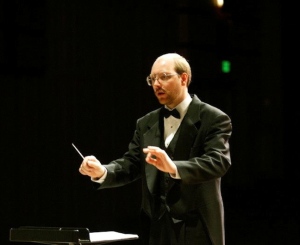




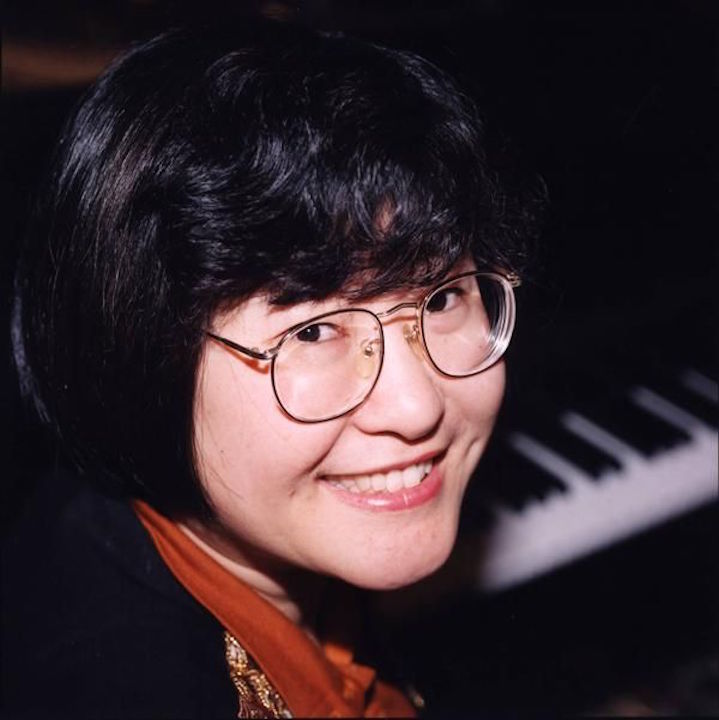







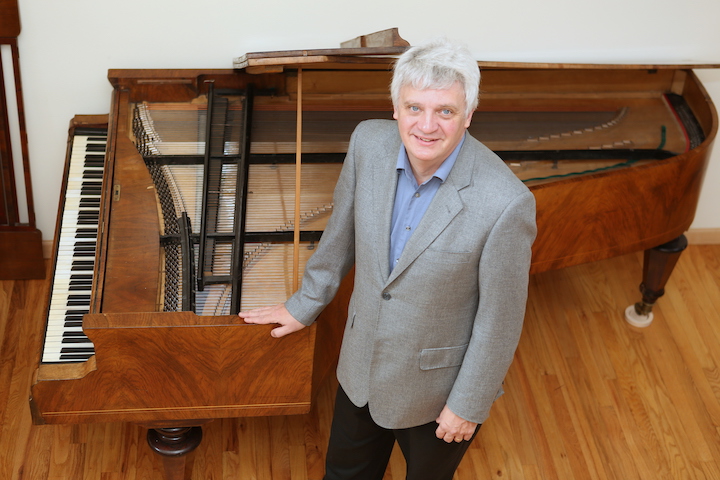
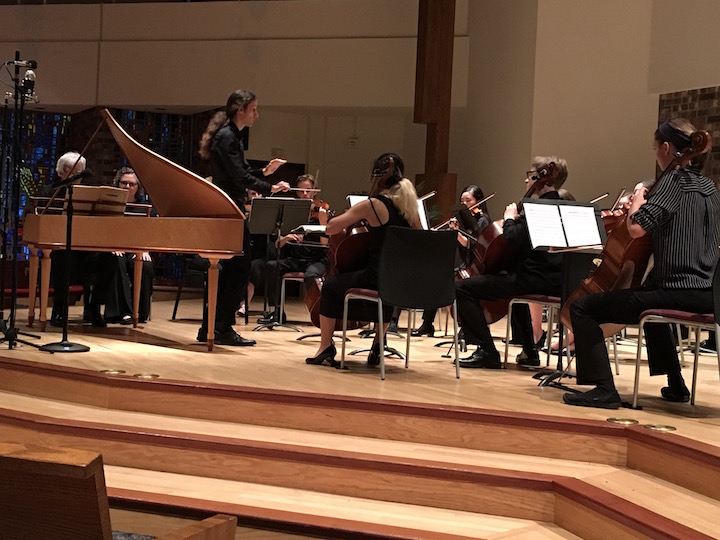
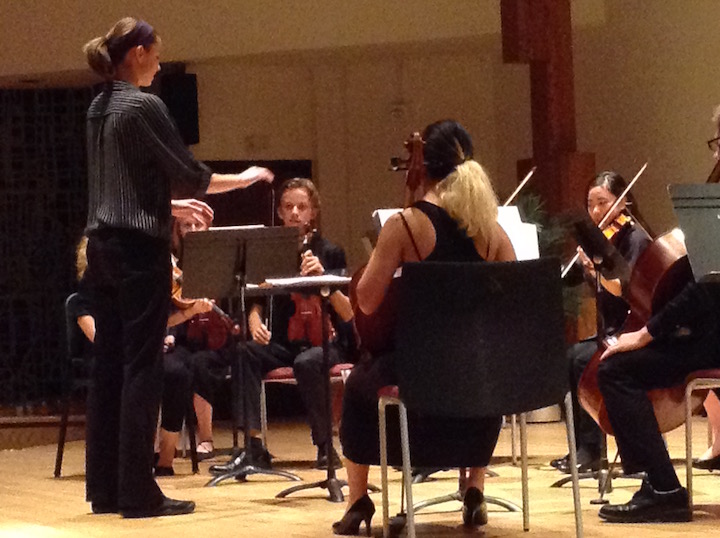
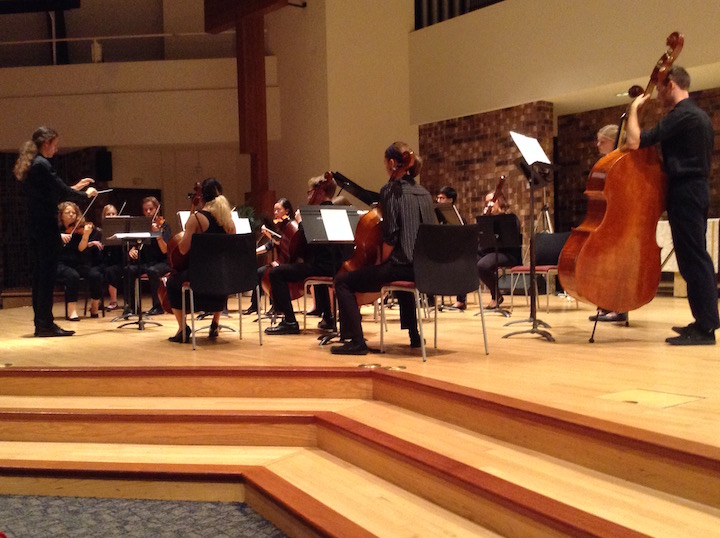

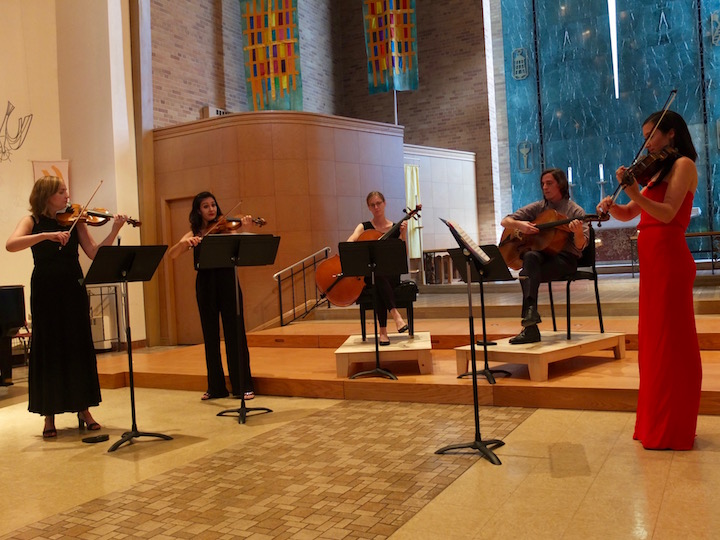
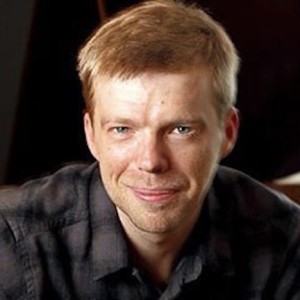
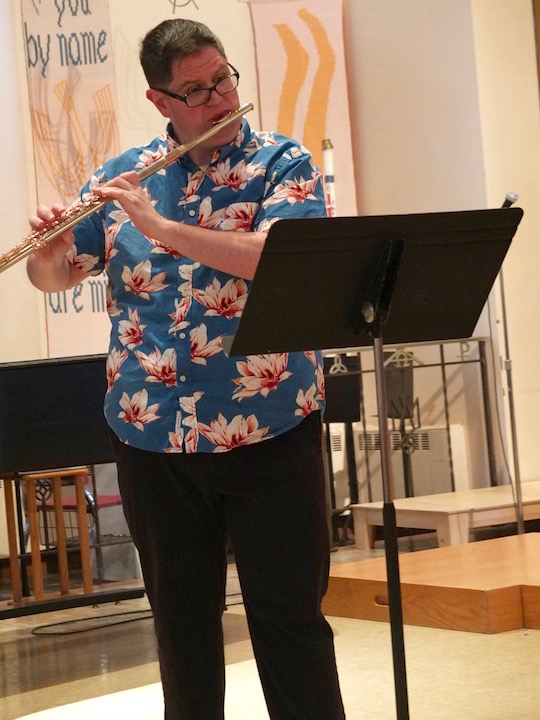
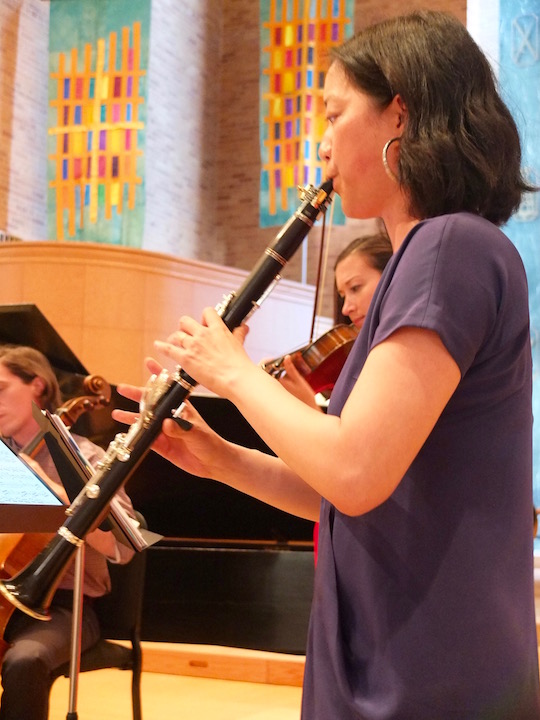
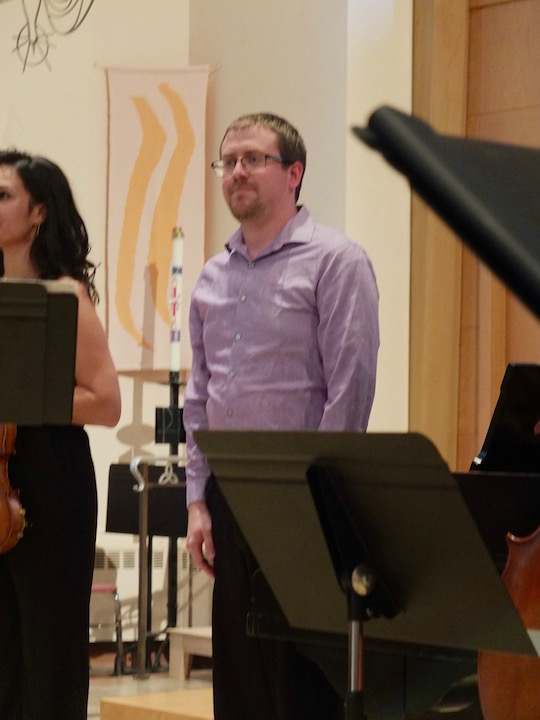
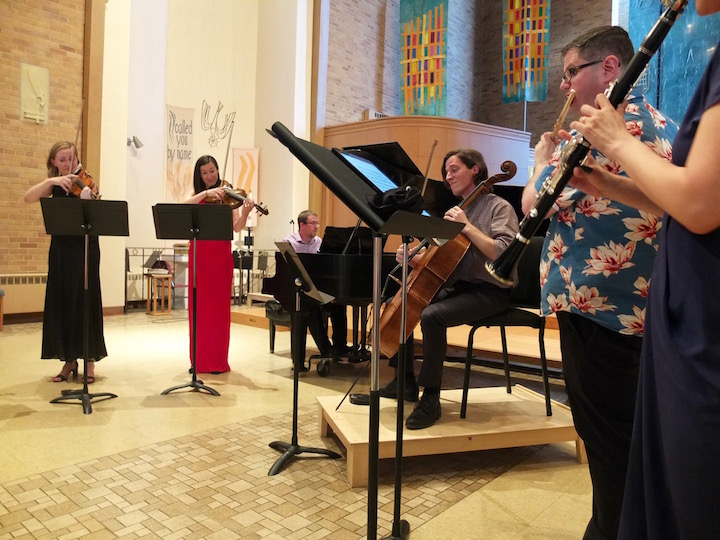

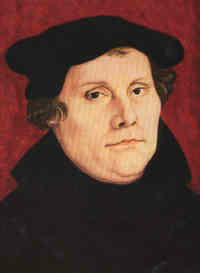






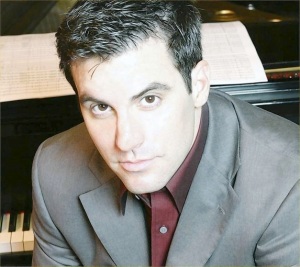












Classical music: Music professor John Schaffer is retiring from UW-Madison. A benefit jazz concert on Saturday, June 1, will celebrate his career as a teacher and former director of the Mead Witter School of Music
Leave a Comment
IF YOU LIKE A CERTAIN BLOG POST, PLEASE SPREAD THE WORD. FORWARD A LINK TO IT OR, SHARE or TAG IT (not just “Like” it) ON FACEBOOK. Performers can use the extra exposure to draw potential audience members to an event.
By Jacob Stockinger
Professor John Schaffer (below), who served as the director of the University of Wisconsin-Madison’s Mead Witter School of Music for 15 years from 1997 to 2012, is retiring this summer.
A jazz concert at 7:30 p.m. on Saturday, June 1, at Full Compass Systems, located at 9770 Silicon Prairie Parkway in Verona, will celebrate his retirement. Details and ticket information are below.
Here is a summary of his major achievements, as compiled by a colleague:
During his tenure as director, John Schaffer:
• Raised more than $10 million for music scholarships, including the Paul Collins graduate fellowships and the Steenbock undergraduate scholarships, more than doubling all student support.
• Secured funding for three endowed professorships: Pro Arte Quartet first violinist David Perry; piano virtuoso and Van Cliburn International Piano Competition bronze medal winner Christopher Taylor; and acclaimed jazz pianist Johannes Wallmann.
• With then-chancellor John Wiley, he launched plans for the new performance facility – the Hamel Music Center — that will open this fall, and raised more than $20 million in private funds for its construction.
• Established the School of Music’s inaugural Board of Visitors, which actively connects the school with a broad community worldwide as it continues to serve in an advisory and support capacity.
• Built strong relations with community organizations including the Madison Symphony Orchestra by establishing the joint residency of the Hunt Quartet – creating further student funding opportunities – and the Independent String Teachers’ Association.
• Established the Perlman Piano Trio (below), an undergraduate scholarship opportunity funded by Kato Perlman.
• Recruited faculty professors/performers with national and international reputations.
• Collaborated with the UW Foundation and Alumni Associations to present UW student performers throughout the country and world.
• Expanded student musician performances across campus, and established the twice-annual Chancellor’s Concert Series.
• Oversaw the planning for the 100th anniversary of the Pro Arte Quartet, the school’s flagship ensemble-in-residence since 1938.
• Established the School of Music recording label, which during its active run released close to 50 albums of faculty artists.
• Created the Wisconsin Center for Music Technology, and was the founding editor of the journal Computers in Music Research.
• Revitalized the Jazz Studies program at UW-Madison that has expanded with additional faculty, new student jazz ensembles and the establishment of a major in jazz performance.
• Was actively involved in music administration on the national level by serving multiple terms on the board of directors of the National Association of Schools of Music, the national accrediting organization. He spent more than a decade training accreditation teams, and performing accreditation reviews of music schools and conservatories throughout the country.
• Served on numerous local boards including those of the Madison Symphony Orchestra, the Madison Country Day School, the Isthmus Jazz Festival, and the Token Creek Chamber Music Festival.
Schaffer’s own academic work in music theory focused initially on analysis of contemporary and non-tonal music, and in artificial intelligence applications in music theory. When he returned to the faculty from being director, he re-focused his teaching on the history, theory and performance of jazz and developed new courses in the discipline and regularly coached student jazz ensembles.
After a 40-year career in academia, Schaffer is retiring to pursue other interests. For the time being, he plans to remain in the Madison area. Initially trained as a classical guitarist, his performance emphasis long ago evolved to playing jazz bass, and he’ll still be heard gigging around town, playing frequently at venues and series such as Otto’s, Capital Brewery’s beer garden, Delaney’s Steak House, Coda Cafe and the North Street Cabaret.
“The biggest reward over all my years as an educator and administrator is the impact I’ve had on the thousands of students I’ve been privileged to teach and encounter,” says Schaffer. “It’s been immensely gratifying.”
Schaffer’s contributions to music in the greater Madison area will be recognized at a benefit concert, sponsored by the Greater Madison Jazz Consortium, on Saturday, June 1, at 7:30 p.m. at Full Compass Systems, 9770 Silicon Prairie Parkway in Verona. UW-Madison Chancellor Emeritus John Wiley will offer commentary and perspective. Light refreshments will be served.
Tickets for the benefit concert are $30 at the door, $25 in advance online. A limited number of student tickets are available at $15. VIP tickets are $150 and include reserved, best-in-house seating, a private pre-concert reception at 6 p.m. and other benefits.
For more information, go to: http://www.jazzinmadison.org/event/jazz-junction-benefit-concert-for-the-jazz-consortium-full-compass/
For tickets, go to:https://www.brownpapertickets.com/event/4236134
Share this:
Tags: #ArtificialIntelligence, #Artists-in-Residence, #AtonalMusic, #BeerGarden, #BlogPost, #BlogPosting, #BronzeMedal, #CapitalBrewery, #ChamberMusic, #ChristopherTaylor, #ClassicalGuitarist, #CodaCafe, #ComputersinMusicResearch, #ContemporaryMusic, #CriticalAcclaim, #DavidPerry, #Delaney'sSteakHouse, #DoubleBass, #DoubleBassist, #FacebookPost, #FacebookPosting, #FirstViolinist, #FullCompassSystems, #GreaterMadisonJazzConsortium, #HamelMusicCenter, #HuntQuartet, #IndependentStringTeachersAssociation, #InternationalReputation, #IsthmusJazzFestival, #JazzMusic, #JazzStudies, #JohannesWallmann, #JohnSchaffer, #JohnWiley, #KatoPerlman, #MadisonCountryDaySchool, #MadisonSymphonyOrchestra, #MeadWitterSchoolofMusic, #MedalWinner, #MusicTheory, #NationalAssociationofSchoolsofMusic, #NationalReputation, #NorthStreetCabaret, #Otto'sRestaurant, #PaulCollins, #PerlmanTrio, #PianoTrio, #ProArteQuartet, #SaturdayNight, #StringQuartet, #TokenCreekChamberMusicFestival, #UniversityofWisconsin-Madison, #UWFoundation, #VanCliburnInternationalPianoCompetition, #VeronaWisconsin, #WisconsinCenterforMusicTechnology, academia, academic, acclaim, accreditation, administration, administrator, advisory, AI, Album, alumni, artificial intelligence, artists, Arts, association, atonal, audience, Beer, beer garden, benefits, blog, bpard, bronze, cabaret, Campus, Capital Brewery, CD, Chamber music, chancellor, Christopher Taylor, classical guitarist, Classical music, coach, Coda Cafe, colleague, commentary, community, Compact Disc, Computers in Music Research, Concert, conservatories, conservatory, construction, contemporary, country, create, created, critical, critical acclaim, David Perry, Delaney's Steak House, detail, director, double bassist, educator, emeritus, ensemble, Facebook, facility, fall, first violinist, forward, fund, fundraise, funds, Garden, gig, Greater Madison Jazz Consortium, guitar, guitarist, Hamel Music Center, History, Hunt Quartet, inaugural, Independent String Teachers Association, interest, international, Isthmus Jazz Festival, Jacob Stockinger, Jazz, jazz studies, Johannes Wallmann, John Schaffer, John Wiley, joint, journal, Kato Perlman, label, like, link, Madison Country Day School, Madison Symphony Orchestra, major, medal, Music, music school, music theory, national, National Association of Schools of Music, non-tonal, North Street Cabaret, online, Orchestra, Otto's, Paul Collins, performance, performer, perspective, Pianist, Piano, Piano Trio, private, Pro Arte Quartet, professor, reception, recording, recruit, refreshment, reputation, residency, restaurant, Retirement, review, Saturday, scholarship, school, School of Music, seating, serve, share, sirector, Steenbock, String quartet, strings, Student, summer, support, tag, Teacher, team, theory, ticket, Token Creek Chamber Music Festival, town, undergraduate, United States, University of Wisconsin, University of Wisconsin-Madison School of Music, University of Wisconsin–Madison, UW Foundation, UW-Madison, UW-Madison Mead Witter School of Music, Van Cliburn International Piano Competition, Verona, Violin, violinist, VIP, visitor, winner, Wisconsin, Wisconsin Center for Music Technology, world, worldwide, year